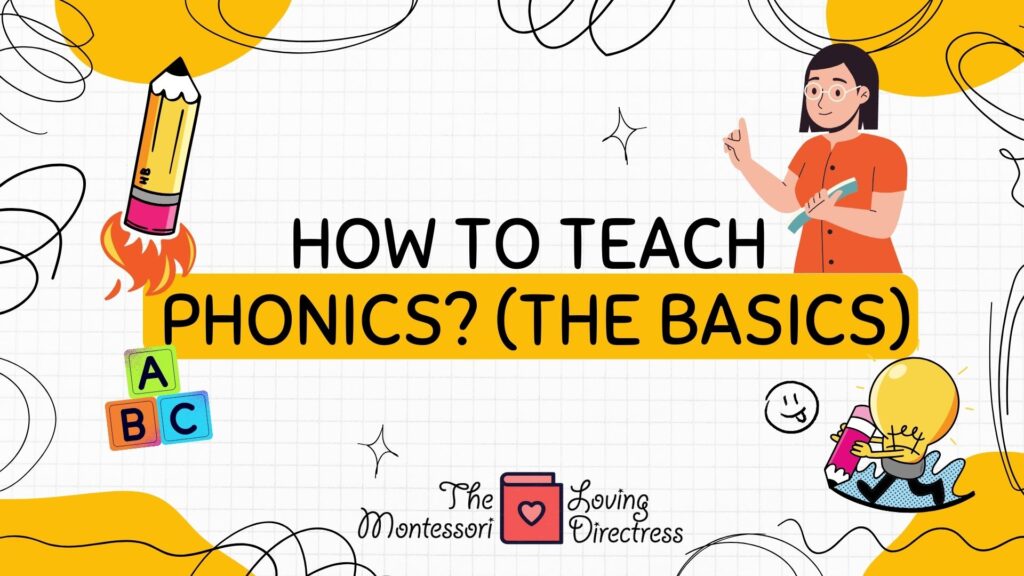Introduction:
Phonics is a method of teaching and learning the relationship between the sounds of spoken language (phonemes) and the letters or letter combinations (graphemes) that represent those sounds in written language. The primary goal of phonics instruction is to help individuals, especially young readers, develop the ability to decode or read words by translating the letters or graphemes into their corresponding phonemes and then blending those sounds together to form words. Phonics instruction is a fundamental component of early literacy education, and it plays a crucial role in helping individuals become proficient readers and spellers.
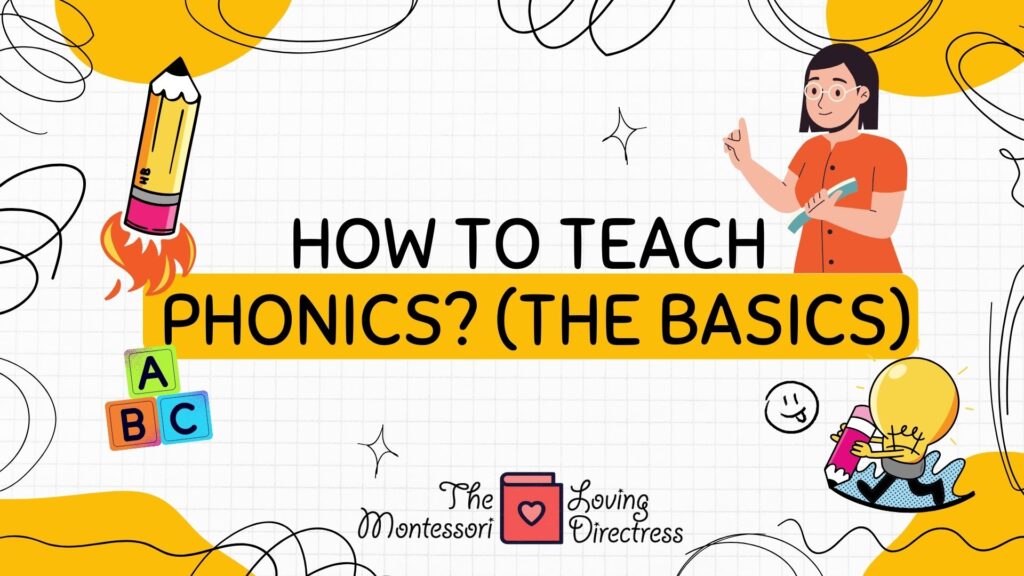
Who invented Phonics?
Phonics, as a method of teaching and understanding the relationship between letters and sounds in language, has evolved over time and does not have a single inventor. It’s a pedagogical approach that has developed through the contributions of various linguists, educators, and scholars over centuries.
Here are a few key figures who made significant contributions to the development of phonics:
- Sir Isaac Pitman (1813-1897): Pitman is known for developing the Pitman Shorthand system, but he also made contributions to phonetics and phonics. He introduced a system for teaching phonetics and advocated for a phonetic approach to teaching reading.
- Noah Webster (1758-1843): Webster, an American lexicographer, and language reformer, is best known for his dictionary. He also emphasized the importance of phonics in his educational reforms, promoting simplified spelling and reading instruction.
- Rudolf Flesch (1911-1986): Flesch was a prolific writer and advocate for phonics-based reading instruction. He authored books such as “Why Johnny Can’t Read” and “Why Johnny Still Can’t Read,” which critiqued whole-word reading methods and supported phonics.
- Orton-Gillingham Approach: The Orton-Gillingham approach is a structured, multisensory phonics program developed by Samuel T. Orton and Anna Gillingham in the early 20th century. It was initially designed to help individuals with dyslexia but has been widely adopted for teaching phonics to all students.
- Maria Montessori (1870-1952): Maria Montessori, an Italian physician and educator, incorporated phonics and phonetics principles into her Montessori method of education. Her approach emphasizes the importance of teaching phonics through hands-on materials and self-directed learning.
It’s essential to understand that phonics, as a concept, has evolved over time as our understanding of language and literacy development has deepened. There is no single inventor of phonics, but rather a collective effort by many educators and linguists to develop and refine phonics-based approaches to reading and writing instruction.
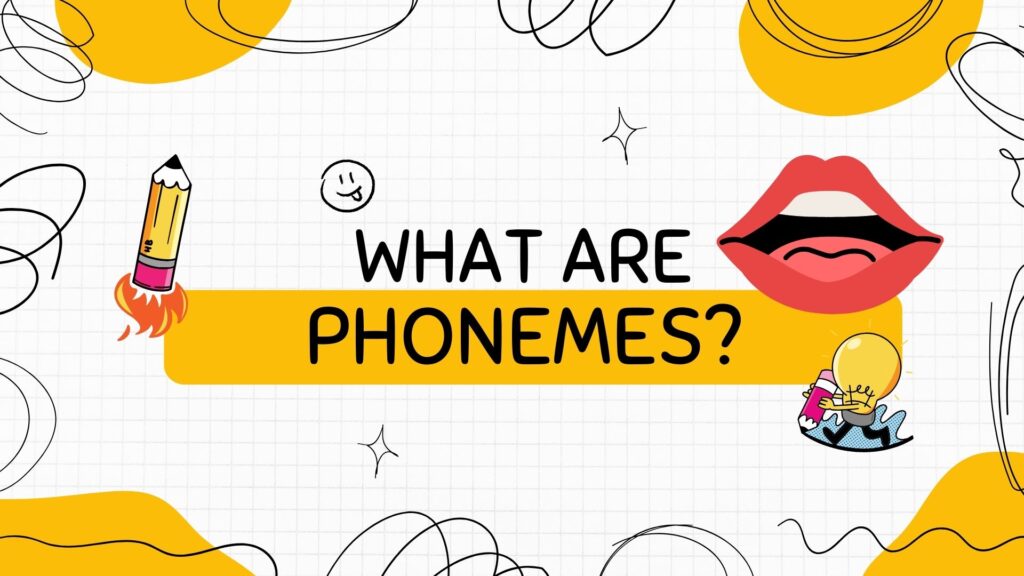
What are Phonemes?
Phonemes are speech sounds that can change the meaning of a word when replaced. In English, there are approximately 44 phonemes, although the exact number can vary depending on the dialect. Each phoneme can be represented by one or more letters or letter combinations.
Types of Phonemes:
- Consonant Phonemes: These are sounds produced with some constriction or closure in the vocal tract. Examples include /p/ as in “pen,” /b/ as in “bat,” and /s/ as in “sun.”
- Vowel Phonemes: These are sounds produced with a relatively open vocal tract and no constriction. Examples include /a/ as in “cat,” /e/ as in “red,” and /i/ as in “tree.”
Examples of Phonemes:
- /p/ and /b/: These are voiceless and voiced bilabial plosives, respectively. The only difference between them is that /p/ is voiceless, meaning your vocal cords do not vibrate when you say it, while /b/ is voiced, and your vocal cords vibrate when you say it. Examples include “pat” (with /p/) and “bat” (with /b/).
- /t/ and /d/: These are voiceless and voiced alveolar plosives. Similar to /p/ and /b/, /t/ is voiceless, as in “top,” and /d/ is voiced, as in “dog.”
- /s/ and /z/: These are voiceless and voiced alveolar fricatives. /s/ is voiceless, as in “snake,” and /z/ is voiced, as in “zebra.”
- /k/ and /g/: These are voiceless and voiced velar plosives. /k/ is voiceless, as in “cat,” and /g/ is voiced, as in “dog.”
- /m/ and /n/: These are voiced bilabial nasal and voiced alveolar nasal sounds. /m/ is in “moon,” and /n/ is in “noon.”
- /a/ and /i/: These are vowel phonemes. /a/ is a low, open front vowel, as in “cat.” /i/ is a high, front, and close vowel, as in “see.”
Minimal Pairs:
To illustrate how changing a single phoneme can alter the meaning of a word, consider “cat” and “bat.” The only difference is the initial sound, /k/ in “cat” and /b/ in “bat.” These are called minimal pairs, and they highlight the significance of phonemes in distinguishing words.
Allophones:
Phonemes can have variations in their pronunciation called allophones. Allophones are not distinctive in meaning but can be influenced by surrounding sounds or the specific phonetic context. For instance, the /p/ sound in “pin” and “spin” is slightly different but still considered the same phoneme.
Understanding phonemes is vital for reading and writing, as it helps individuals recognize and decode words by identifying the sound-letter relationships in written language. It’s a foundational concept in phonics instruction and plays a crucial role in developing strong reading and spelling skills.
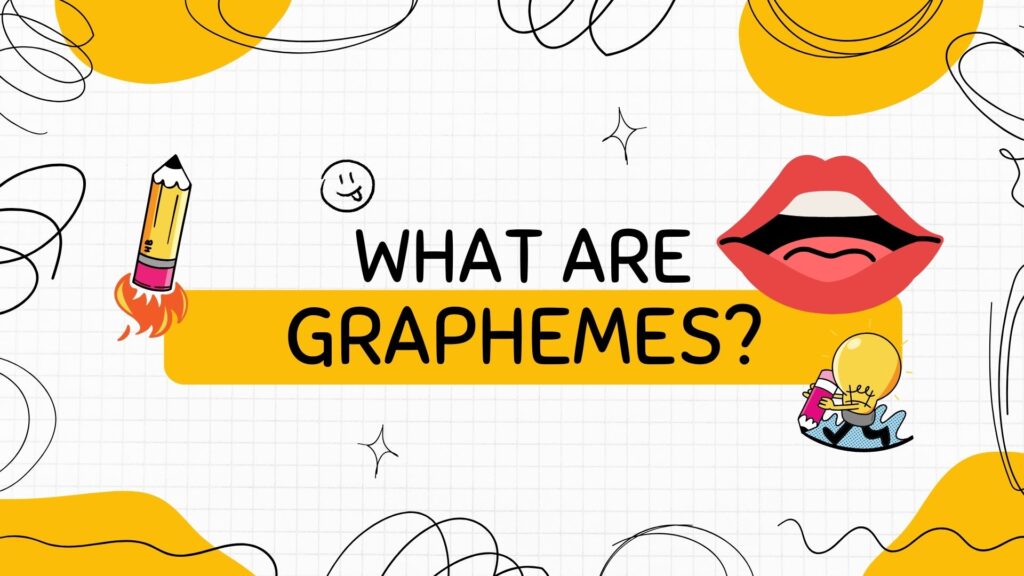
What are Graphemes?
Graphemes are the written or printed symbols used to represent the sounds of a language. In other words, graphemes are the letters or combinations of letters that correspond to the phonemes (the individual speech sounds) in a language. Graphemes are a fundamental component of written language and play a crucial role in reading and writing. Let’s explore graphemes in more detail with examples:
Single-Letter Graphemes:
Single-letter graphemes consist of individual letters that represent specific sounds. In the English language, there are 26 single-letter graphemes, each corresponding to a phoneme. Here are some examples:
- A: The letter “A” represents the /eɪ/ sound, as in “cake.”
- B: The letter “B” represents the /b/ sound, as in “bat.”
- C: The letter “C” can represent different sounds, such as /k/ in “cat” or /s/ in “cent.”
- D: The letter “D” represents the /d/ sound, as in “dog.”
- E: The letter “E” represents various sounds, including /iː/ in “bee” and /ɛ/ in “red.”
Multigraphs:
Multigraphs are combinations of letters that represent a single sound or phoneme. In English, multigraphs are often used to represent sounds that cannot be adequately represented by a single letter. Examples of multigraphs include:
- Th: The combination “th” represents two different sounds: /θ/ as in “thing” and /ð/ as in “this.”
- Sh: The combination “sh” represents the /ʃ/ sound, as in “shoe.”
- Ch: The combination “ch” represents the /tʃ/ sound, as in “cheese.”
- Ph: The combination “ph” represents the /f/ sound, as in “phone.”
Digraphs:
Digraphs are specific types of multigraphs consisting of two letters that represent a single sound. Digraphs are quite common in English, and they often help clarify the pronunciation of words. Some examples include:
- Ai: In “rain,” the digraph “ai” represents the /eɪ/ sound.
- Ea: In “bread,” the digraph “ea” represents the /ɛ/ sound.
- Ou: In “house,” the digraph “ou” represents the /aʊ/ sound.
Silent Letters:
In some cases, a grapheme does not represent a sound. These are known as silent letters. For example, in the word “knight,” the “k” is silent and serves only as a historical relic of English spelling.
Graphemes in Other Languages:
Different languages have their own sets of graphemes that correspond to the specific sounds and phonemes in those languages. For example, the graphemes in the Cyrillic alphabet represent the sounds of Russian, while the characters in the Devanagari script represent the sounds of Hindi.
Understanding graphemes is essential for learning how to read and write in any language. Phonics instruction, which teaches the relationship between graphemes and phonemes, is a fundamental part of early literacy education. Recognizing and working with graphemes allows individuals to decode written words, spell correctly, and become proficient readers and writers.
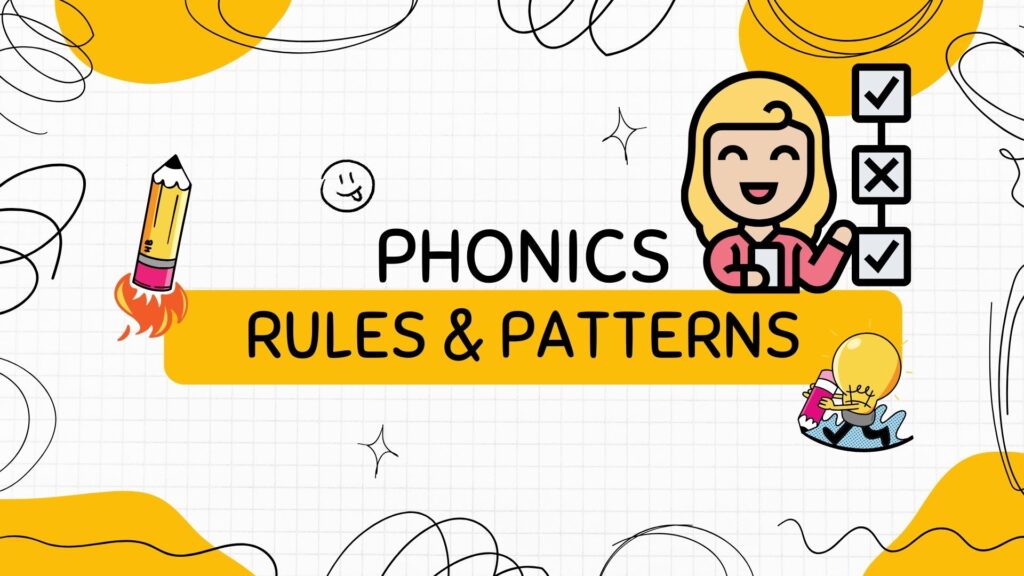
Phonics Rules & Patterns:
Phonics rules and patterns are systematic guidelines for understanding the relationship between letters (graphemes) and their corresponding sounds (phonemes) in a language. Learning these rules and patterns is essential for developing strong reading and spelling skills. Here, we’ll delve into various phonics rules and patterns commonly encountered in the English language:
1. Short and Long Vowels:
- Short Vowels: In most cases, when a vowel is followed by a consonant in a single-syllable word, it is pronounced as a short vowel. For example, in the word “cat,” the “a” is pronounced as /æ/. Other examples include “bet,” “pig,” and “dog.”
- Long Vowels: When a vowel is followed by an “e” or “i” in a single-syllable word, it is usually pronounced as a long vowel. For example, in the word “cake,” the “a” is pronounced as /eɪ/. Other examples include “bike,” “gate,” and “cube.”
2. Consonant Blends:
Consonant blends involve two or more consonants grouped together within a word. The individual consonants retain their distinct sounds. Common consonant blends include “bl” in “black,” “st” in “star,” and “gr” in “great.”
3. Silent Letters:
In some words, certain letters do not make a sound. These are called silent letters. For example, in the word “knight,” the “k” is silent. Silent letters can be tricky to learn because they don’t follow the usual sound-letter correspondences.
4. Digraphs:
A digraph is a combination of two letters that represent a single sound. Common digraphs include:
- “Sh” in “shoe,” where it represents the /ʃ/ sound.
- “Ch” in “cheese,” representing the /tʃ/ sound.
- “Th” in “thing,” representing the /θ/ sound.
- “Wh” in “whale,” representing the /w/ sound.
5. R-Controlled Vowels:
In words with “r-controlled vowels,” the vowel sound is affected by the presence of the letter “r.” Common examples include “ar” in “car,” “er” in “her,” and “or” in “fork.” The “r” typically changes the way the vowel is pronounced.
6. Silent “E” Rule:
The silent “e” rule states that when a word ends with an “e,” the preceding vowel is usually pronounced as a long vowel. For example, in the word “bike,” the “e” at the end makes the “i” long (/aɪ/). However, when the “e” is removed, as in “bik,” the “i” becomes short (/ɪ/).
7. Doubling Consonants:
In words with short vowel sounds, a consonant is often doubled before adding a suffix that begins with a vowel. For instance, in the word “hop,” the “p” is doubled when forming “hopping.” This maintains the short vowel sound.
8. Vowel Teams:
Vowel teams are pairs or groups of vowels that work together to produce a specific sound. Common vowel teams include “ea” in “tea” (/iː/), “ai” in “rain” (/eɪ/), and “oa” in “boat” (/oʊ/).
9. Schwa Sound:
The schwa is a reduced, neutral vowel sound often represented by the letter “a” in unstressed syllables, as in the second syllable of “sofa” (/səʊ-fə/). The schwa sound is common in English and can be tricky to identify.
10. Homophones:
Homophones are words that sound the same but have different meanings and spellings. Understanding the correct usage of homophones is crucial for spelling and comprehension. Examples include “there,” “their,” and “they’re.”
These are just a few of the many phonics rules and patterns that exist in the English language. Teaching and learning these rules and patterns are vital for developing strong literacy skills, as they provide a systematic framework for understanding the relationships between letters and sounds, which is fundamental to reading and spelling.
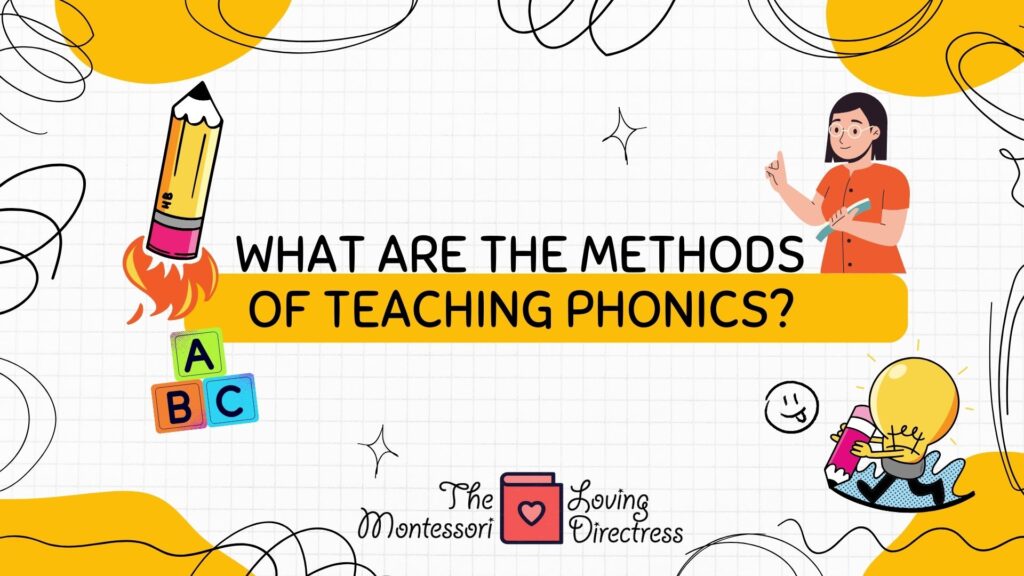
What are the methods of Teaching Phonics?
Teaching phonics is a fundamental part of early literacy education, helping students understand the relationship between letters and their corresponding sounds. There are several effective methods for teaching phonics, each with its unique approach. Here are some of the most common methods in detail:
1. Synthetic Phonics:
Synthetic phonics is a systematic and sequential approach to teaching phonics, which involves breaking down words into their individual phonemes and then blending them to read words. This method is highly structured and typically follows a specific order when introducing phonemes.
Key Features:
- Sound-to-Letter Correspondence: Students learn to associate specific phonemes with corresponding letters or letter combinations.
- Segmentation: Students break down words into phonemes and then blend them to read the word.
- Sequential Learning: Phonemes are introduced in a logical order, starting with basic sounds and progressing to more complex ones.
2. Analytic Phonics:
Analytic phonics takes a whole-to-part approach. Instead of breaking words down into individual phonemes, students start with whole words and then analyze them for phonetic elements. It focuses on recognizing patterns and word families.
Key Features:
- Word Recognition: Students begin by recognizing whole words and gradually identify common patterns.
- Word Families: This method emphasizes learning common rimes (e.g., -at, -an) and applying them to multiple words.
- Contextual Learning: Words are often taught within the context of sentences or stories.
3. Embedded Phonics:
Embedded phonics is an approach where phonics instruction is integrated into meaningful reading and writing activities. Rather than being taught as a separate subject, phonics is applied while students read and write.
Key Features:
- Contextual Learning: Phonics is introduced in the context of real reading and writing tasks.
- Authentic Usage: Students apply phonics skills immediately in their reading and writing experiences.
- Increased Relevance: Phonics is seen as a tool for better understanding and expressing ideas in text.
4. Onset and Rime Approach:
This approach focuses on the onset (the initial consonant or consonant blend) and the rime (the vowel and any following consonants) of words. Students learn to recognize common rimes and how they change with different onsets.
Key Features:
- Chunking Words: Students break words into onset and rime to decode them.
- Word Building: Understanding how different onsets can be added to common rimes to create new words.
- Word Families: Similar to analytic phonics, students learn to recognize and read word families.
5. Linguistic Phonics:
Linguistic phonics integrates the study of phonics with linguistic concepts, such as the sounds, syllables, and morphemes in words. It emphasizes the understanding of the linguistic structure of language.
Key Features:
- Phonological Awareness: Students develop a deep understanding of phonological elements in words.
- Morphemic Awareness: Recognizing the meaning-carrying parts of words, such as prefixes and suffixes.
- Syllable Division: Learning to divide words into syllables and apply phonics rules.
6. Analogy Phonics:
Analogical phonics involves teaching students to use known words to decode new, unfamiliar words. Students identify similarities between known words and new words to make accurate phonetic guesses.
Key Features:
- Use of Analogy: Students compare known words to unknown words to determine the pronunciation of unfamiliar words.
- Word Recognition: Relying on known words as reference points for decoding new words.
- Contextual Clues: Often used in the context of reading and deriving meaning from context.
7. Visual Phonics:
Visual phonics incorporates visual cues and handshapes to represent phonemes. It is particularly useful for students with hearing impairments or struggling readers who benefit from a multisensory approach.
Key Features:
- Use of Visual Cues: Handshapes and visual symbols represent phonemes.
- Multisensory Learning: Engages students through visual and tactile modalities.
- Effective for Diverse Learners: Beneficial for students with various learning needs.
When teaching phonics, it’s essential to select the method that aligns with the needs and preferences of your students. Many educators use a combination of these methods to ensure a comprehensive and effective approach to phonics instruction. Additionally, using engaging materials, games, and real-world reading and writing opportunities can make phonics instruction more enjoyable and effective for young learners.
What is the appropriate age to begin learning phonics?
The appropriate age to begin learning phonics can vary depending on individual readiness, but research and educational guidelines provide some general insights into when phonics instruction is most effective. Here’s a rough guideline, along with references to research:
1. Preschool (Ages 3-4):
- Phonological Awareness: In preschool, children can develop phonological awareness, which is the ability to recognize and manipulate the sounds in spoken language. Activities like rhyming, identifying initial sounds, and playing with language are beneficial at this age. Research, such as that by Adams (1990), suggests that phonological awareness skills in preschool are strong predictors of reading success in the future.
2. Kindergarten (Ages 5-6):
- Letter-Sound Correspondence: Formal phonics instruction often begins in kindergarten. Children learn letter-sound correspondences, such as associating the letter “A” with the sound /æ/. Research by the National Reading Panel (2000) highlights the importance of systematic phonics instruction in early grades for reading development.
3. Early Grades (1st and 2nd Grade):
- Decoding Skills: In first and second grade, students continue to build upon their phonics skills by decoding words, learning common phonics rules and patterns, and applying their knowledge to reading. Research by Torgesen (2002) emphasizes the importance of explicit and systematic phonics instruction during this period.
It’s important to remember that children develop at different rates, and there can be a wide range of readiness levels within the same age group. Therefore, it’s crucial for educators and parents to be flexible and responsive to individual needs.
Research and educational guidelines suggest that while some basic phonological awareness skills can be developed in preschool, formal phonics instruction typically begins in kindergarten and continues into the early grades. Early and systematic phonics instruction is associated with improved reading outcomes and can provide a strong foundation for future literacy skills. However, it’s essential to balance phonics instruction with other aspects of literacy, including comprehension, fluency, and vocabulary development, to ensure well-rounded reading abilities.
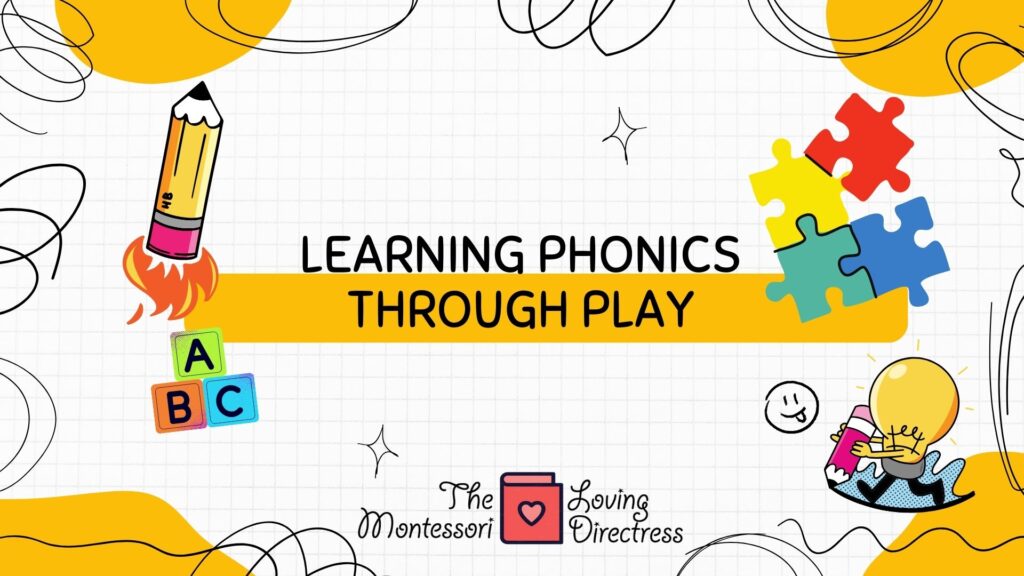
Learning Phonics through play:
Teaching phonics through fun games can make the learning process engaging and memorable for young learners. Here are some recommended phonics games with examples:
1. Phonics Bingo:
- Game Description: Create Bingo cards with phonetic patterns or words instead of numbers. Call out the phonemes or words, and students mark the corresponding spots on their cards.
- Example: In a vowel-based Phonics Bingo, call out words like “cat,” “pen,” or “bag,” and students find and mark words containing those vowels.
2. Phonics Memory (Matching) Game:
- Game Description: Create pairs of cards, with one card displaying a word and the other showing a corresponding image or the phonetic representation of the word. Students take turns flipping cards to make matches.
- Example: Match the word “fish” with a picture of a fish or with the phonetic representation /f/ /i/ /sh/.
3. Phonics Treasure Hunt:
- Game Description: Hide objects or flashcards with phonetically related words or letters around the classroom or a designated area. Provide students with clues to find the hidden items.
- Example: Hide cards with words containing “oa” and provide a clue like “This item rhymes with ‘boat’.”
4. Phonics Alphabet Hopscotch:
- Game Description: Draw a hopscotch grid with letters or phonemes instead of numbers. Students hop from one square to another while calling out the sound represented in each square.
- Example: Draw a hopscotch grid with letters and call out “b” or “sh” as students jump on the corresponding squares.
5. Phonics Scavenger Hunt:
- Game Description: Give students a list of phonetically related words or sounds, and ask them to find items in the classroom that start with those sounds.
- Example: Provide a list with “c” (e.g., cat, chair, clock) and have students search for objects that begin with the /k/ sound.
6. Phonics Board Games:
- Game Description: Utilize phonics board games like “Candy Land” or “Chutes and Ladders” with phonics cards or rules added. Players advance based on their ability to correctly identify phonemes or words.
- Example: In a customized version of “Chutes and Ladders,” players move forward or backward based on correctly identifying words with specific phonetic patterns.
7. Phonics Puzzles:
- Game Description: Create puzzles with words or phonemes. Students must assemble the puzzle by connecting pieces with matching sounds or letters.
- Example: Create a puzzle with three pieces: “cl” on one, “ock” on another, and an image of a clock on the third. Students assemble the puzzle to form the word “clock.”
8. Phonics Song and Dance:
- Game Description: Turn learning into a song and dance activity. Sing phonics songs or rhymes with corresponding hand or body movements.
- Example: Sing a song that goes, “C-A-T spells cat,” and have students form the letters with their bodies.
9. Phonics Building Blocks:
- Game Description: Use building blocks or letter tiles to construct words or sounds. Students build words by arranging blocks with the correct letters.
- Example: Provide letter tiles, and ask students to construct words like “dog,” “run,” or “jump.”
10. Phonics Relay Race:
- Game Description: Set up a relay race where students run to a designated spot, pick a card with a phoneme or word, and correctly identify it before passing the card to the next teammate.
- Example: Students race to a card that reads “slip” and must pronounce the word’s sounds before handing it to the next runner.
These games make learning phonics enjoyable and interactive. They provide opportunities for students to practice phonetic skills in a playful and engaging way, reinforcing their understanding of the relationships between letters and sounds.
Free Educational Resource:
“Phonics Riddle Adventure” is an engaging and comprehensive free educational resource designed to enhance phonics skills. This resource features an array of riddles covering short vowels, beginning sounds, long vowels, short E, consonant blends, digraphs, word endings, and rhyming words. Each category contains four riddles, making it an excellent booklet for both revising and learning phonics concepts. Ideal for reinforcing fundamental phonics skills, this resource offers an enjoyable and interactive way for learners to grasp and master these essential linguistic elements. Download it now for free to embark on a captivating journey into the world of phonics proficiency! DONT FORGET TO CHECK OUT MORE FREE EDUCATIONAL RESOURECES.


